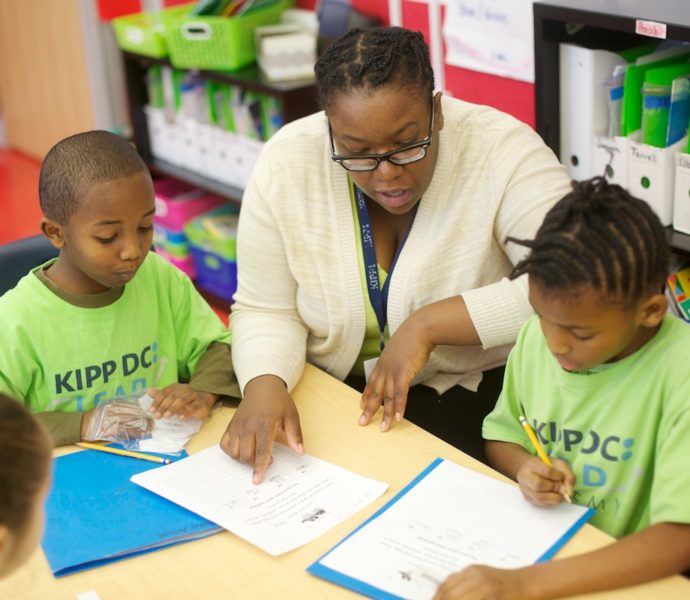Big changes at key charter school network go unnoticed in prevailing debate
ByJay Mathews
Read the full column at WashingtonPost.com >
Our national debate over public charter schools lacks nuance and depth. Opponents say charters are leeches sucking money out of already struggling regular public schools. Supporters say charters are innovators giving children better lessons while fighting evil district bureaucrats trying to rein them in.
When you talk to the educators actually running charter schools, that debate seems way off the mark. In a long conversation with KIPP DC Executive Director Susan Schaeffler, the most successful charter leader in the city, I learned of significant changes in her network, sparked by an intense competition for teachers that the prevailing debate never mentions.
When I met Schaeffler in a Southeast Washington church basement 16 years ago as she assembled classroom furniture pieces with the help of her father, I was startled to hear that the fifth-grade KIPP class she was starting would begin at 7:45 a.m. and not end until 5 p.m. That was nearly three hours longer than the standard school day in the District and in most of the country. Could that work?
It did. With Saturday classes, week-long field trips and required summer school, the extra time coupled with careful selection and training of creative teachers produced the highest middle school achievement rates in the city, even though almost all KIPP students come from low-income families. KIPP DC now has five early-childhood schools, five elementary schools, five middle schools and one high school for a total of nearly 5,800 students. KIPP nationally has 200 nonprofit charter schools.
Many people still think of long days when they hear the name KIPP, but the nature of that extra time has changed at KIPP DC. Saturday classes have been shifted from the middle to the elementary schools. The July summer school has moved to August, just before the regular school year begins. And the middle school day has been cut by an hour, running from 8 a.m. to 4:15 p.m.
The growth of her network has compensated for the lost time in ways that were impossible when KIPP DC was just three middle schools. The incoming fifth-graders then needed a three-week summer session just to become accustomed to requirements that include regular attendance, attention in class, substantial homework, and no teasing or bullying of other students. These days, most students start KIPP long before fifth grade. They don’t need a big adjustment from the less demanding schedules of regular public schools. Eighty-two percent of freshmen entering KIPP College Prep, the network’s high school, come from KIPP middle schools.
To ease a long summer break that can lead to learning loss in low-income urban children, KIPP DC wants its students to attend high-quality summer camps. Also, with established rules and routines in place, there is more time for learning. KIPP teachers continue to check with one another on what’s happening in their classes, like undergraduates at a good small college.
Experience with high school students has also led the system to adjust its middle school rules, such as quietly walking from class to class in line. The high school principal wanted her students comfortable going to their lockers and chatting in the hallway, so the middle schools adopted a more flexible approach with seventh- and eighth-graders.
That’s just the beginning of KIPP adjustments. In future columns, I will reveal more, including an innovative way of training teachers that most schools I know wish they could adopt.
